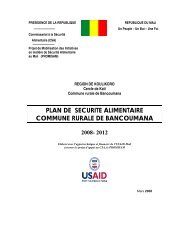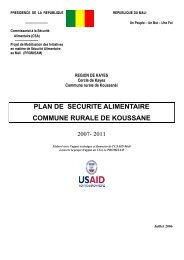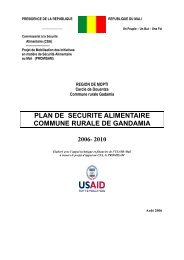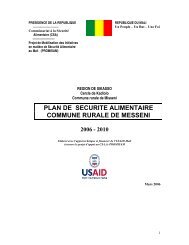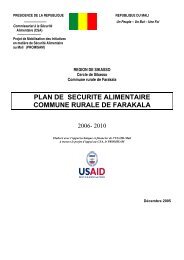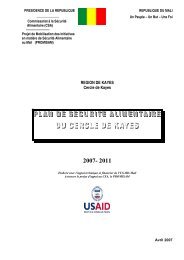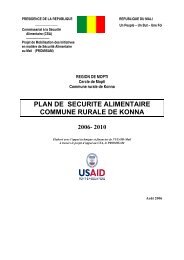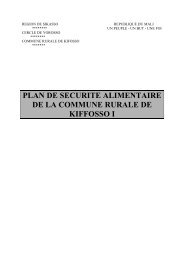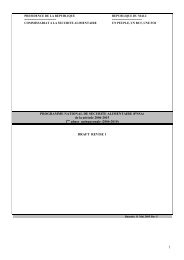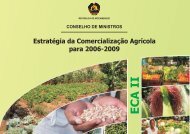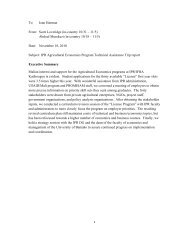STATA 11 for Windows SAMPLE SESSION - Food Security Group ...
STATA 11 for Windows SAMPLE SESSION - Food Security Group ...
STATA 11 for Windows SAMPLE SESSION - Food Security Group ...
Create successful ePaper yourself
Turn your PDF publications into a flip-book with our unique Google optimized e-Paper software.
Stata <strong>11</strong> Sample Session Section 2 – Restructuring Data Files – Table Lookup & Aggregation<br />
The key word “unmatched” is used and within<br />
parentheses the type of join is specified). There<br />
are four types of joins:<br />
none - all unmatched observations are ignored<br />
(this is the default), i.e. if there is not a matching<br />
observation in both files, the observation is<br />
dropped from the final dataset.<br />
both - unmatched observations from the “master”<br />
(or file that is in memory) and “using” (file that is<br />
not in memory) data are included.<br />
master - unmatched observations from the<br />
“master” data are included but not unmatched<br />
observations from the “using” file.<br />
using - unmatched observations from the “using”<br />
data are included but not unmatched observations<br />
from the “master” file.<br />
4. Cross datasets. In this type of merge, the first<br />
observation in the first file is joined horizontally<br />
with every observation in the second data set. The<br />
second observation in the first file is then joined<br />
with every observation in the second data set and<br />
so on. This type of file combination is rarely<br />
used.<br />
In this tutorial we will use the “merge” and the “joinby”<br />
commands.<br />
With this in<strong>for</strong>mation in hand, we can now think about<br />
the specific steps we must take to create the file we need<br />
to produce the output we want. Logically, there are three<br />
steps:<br />
1. We need to know how many calories each<br />
household produced <strong>for</strong> the year. We can generate<br />
a file with this in<strong>for</strong>mation using data we have<br />
stored in three files—the production file, c-q4.dta,<br />
and two table-lookup files, conver.dta and<br />
calories.dta.<br />
2. We need to know how many adult equivalents are<br />
in each household. We can generate a file with<br />
this in<strong>for</strong>mation using data from the member file,<br />
c-q1a.dta.<br />
3. We need to combine the results from steps 1 and 2<br />
into one file so we can compute calories produced<br />
per adult equivalent per day.<br />
55



